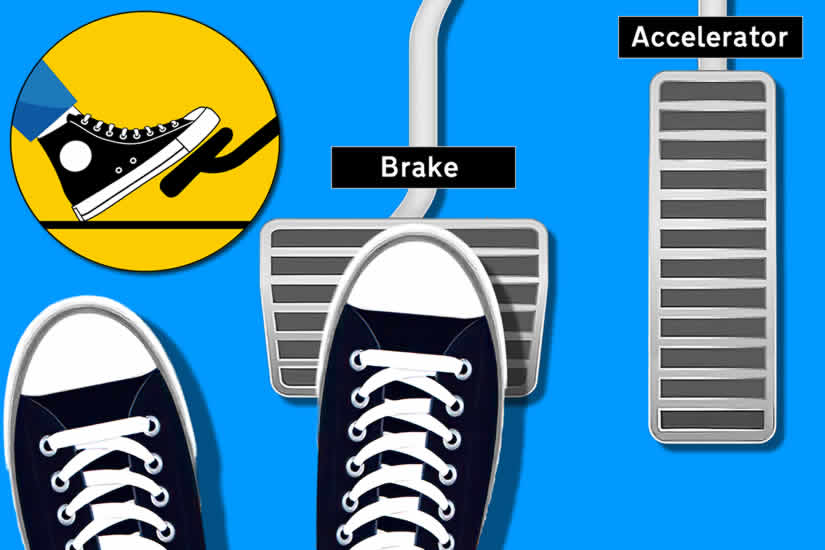While learning to drive, one of the most important phrases you’re likely to hear from your supervising driver or driving instructor is to ‘cover the brake’. Here we explain what ‘cover the brake means, why we need to do it and when we should do it.
What Does Cover the Brake Mean?
In simple terms, ‘cover the brake brake’ means to remove your right foot from the accelerator pedal and hold your foot over the brake pedal, but without pressing it.
Why Should We Cover the Brake?
Covering the brake provides you with two benefits:
1. Increases fuel economy
In traditional fossil fuel powered cars, removing your foot from the accelerator pedal allows for something called ‘engine braking‘. Engine braking is the friction from the engine slowing down, in turn making the vehicle slow down. If coming to a stop in your vehicle, slowing down initially using engine braking and finishing off by using the footbrake smoothly and progressively uses less fuel and decreases the wear on the vehicle’s brakes.
In fact, you’ll often find that by slowing down earlier on, using engine braking, means that you’ll not have to stop at all, making your journey smoother and more fuel efficient.
The same procedure can be applied to electric cars, but rather than the engine slowing the vehicle, regenerative braking is used to not only slow down the vehicle, but also to recharge the battery.
2. Improved Stopping Distances
We also cover the brake when we spot a potential hazard in the road ahead. The benefit of covering the brake is improved reaction time, which helps to reduce stopping distances. Your foot is already over the brake pedal and in the perfect position to press it. If you should need to press the brake pedal quickly, you’ll be able to do so promptly and without delay.
When Should You Cover the Brake?
You should cover the brake when:
- Approaching a junction or roundabout in preparation to slow down or stop.
- Driving downhill.
- Approaching a blind corner in the road.
- Approaching the top of a hill while driving.
- Approaching a queue of traffic or a stop light.
- Approaching a pedestrian crossing when people are waiting.
- You identify any hazard that may require slowing down or stopping.

Thanks for this great summary, I found it very practical and useful. I would suggest winter weather that decreases the grip as a distinct section when advising on when to cover the break because lots of drivers aren’t aware of this and believe it’s enough to just lower their speed.
Hi MomOfThree,
Glad you found the article useful and thanks also for the idea on winter driving. Good idea!